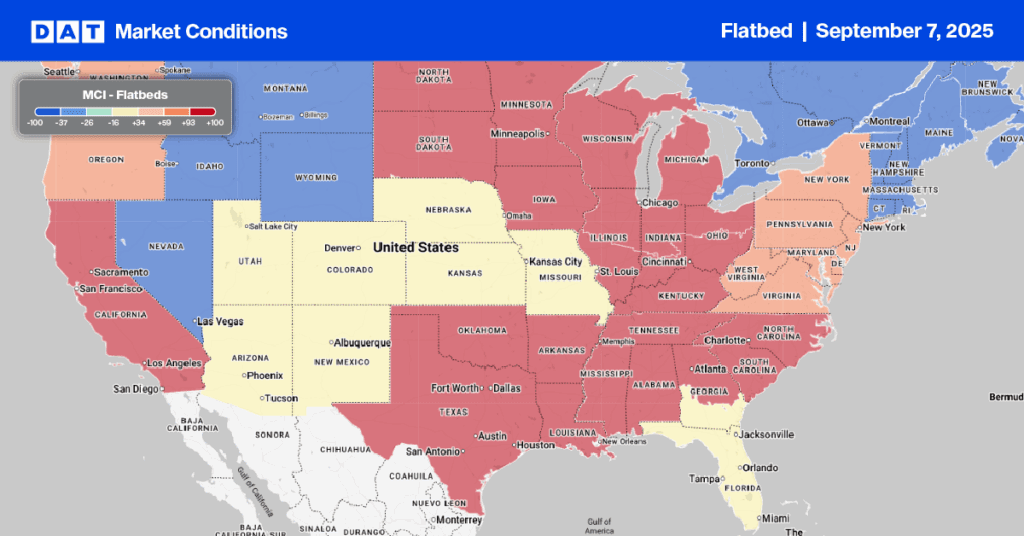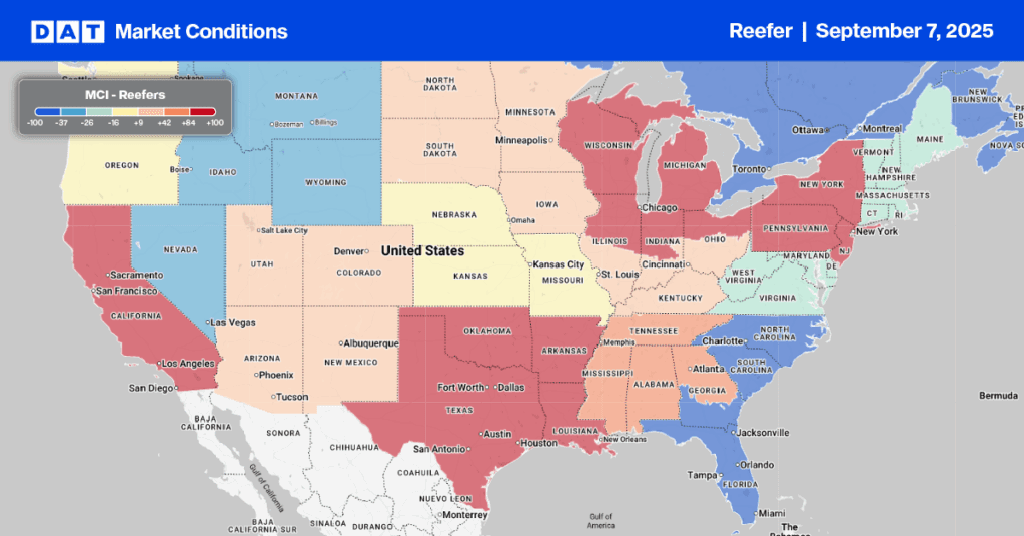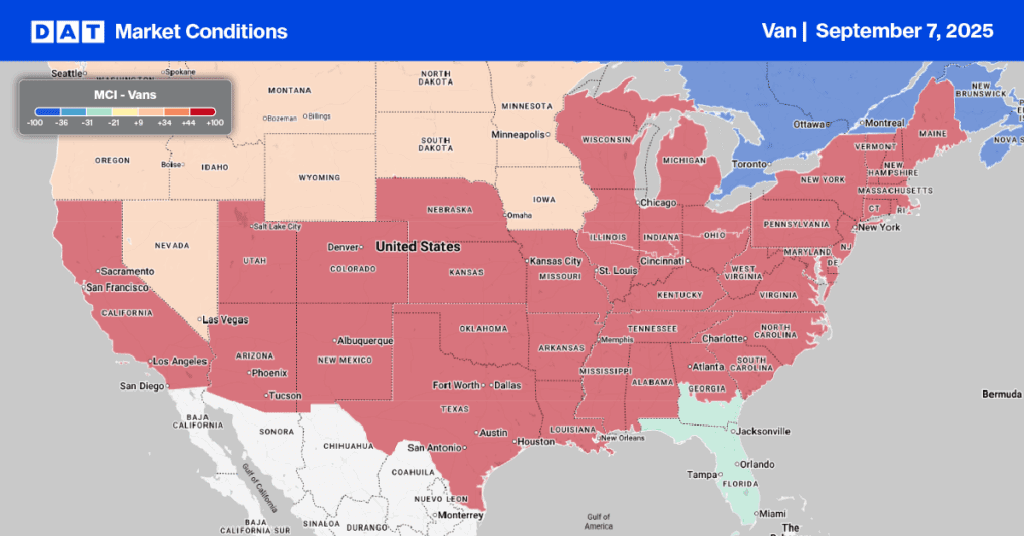While vessel throughput continues to improve on the West Coast, container import volumes continue to surge. Many fear the situation will only get worse over the summer.
Get the clearest, most accurate view of the truckload marketplace with data from DAT iQ.
Tune into DAT iQ Live, live on YouTube or LinkedIn, 10am ET every Tuesday.
The Port of Los Angeles recently announced that BAL Container Line and China United Container Line will add capacity to the booming trans-Pacific trade in the coming weeks. The goal is to meet the explosive demand for US imports in its eleventh month. The South Korean Hyundai Merchant Marine (HMM) is also planning to add at least four extra-loader vessels to the West Coast in the next two months.
For shippers, this is timed perfectly for back-to-school and back-to-office shopping season and leading into the traditional holiday retail shopping season.
What does all this mean for truckload carriers?
Over the last year, DAT saw a very tight positive correlation between loaded import container volumes and load board load posts on the dry van spot market at all of the major U.S. ports. June was no exception.
The latest data from IHS Markit shows that June container imports were up 30% this year. However, volumes did drop 15% this month to around the same level as April. Volume is still exceptionally high for this time of year though.
At the top 10 ports, which accounts for 86% of total monthly container import volume in June, volumes were up 30% this year and down 12% this month. However, load posts increased 12% and spot rates increased by 5%. It’s important to note that part of the record May import volume will have been shipped by road in June given the length of delays being experienced at both Los Angeles ports.
In terms of where most of the imported container volume arrives in the U.S., the top 10 ports ranked for import volume are:
- Los Angeles (19%)
- New York (16%)
- Long Beach (14%)
- Savannah (9%)
- Houston (6%)
- Norfolk (6%)
- Charleston (5%)
- Oakland (4%)
- Tacoma (3%)
- Seattle (3%)
The San Pedro Port Complex, which includes the Port of Los Angeles and the Port of Long Beach, account for around a third of all containers imported into the U.S.
Truckload carriers on the West Coast can expect more freight volume for the following reasons:
- Heavy concentration of retail imports on the transpacific trade lane in Southern California
- Addition of new ocean liner services over the summer
- Consolidation of port calls weighted towards the larger ports
Capacity is still tight nationally, but it’s even tighter in the Los Angeles market. Spot rates are up about 2% this month and sitting around $3.22/mile to all destinations. But on some lanes, including Phoenix where a high volume of imports are shipped to e-commerce warehouses, spot rates are averaging $4.46/mile this week. That’s up $1.44/mile since the start of the year and close to 84% higher than the current national average dry van rate.


